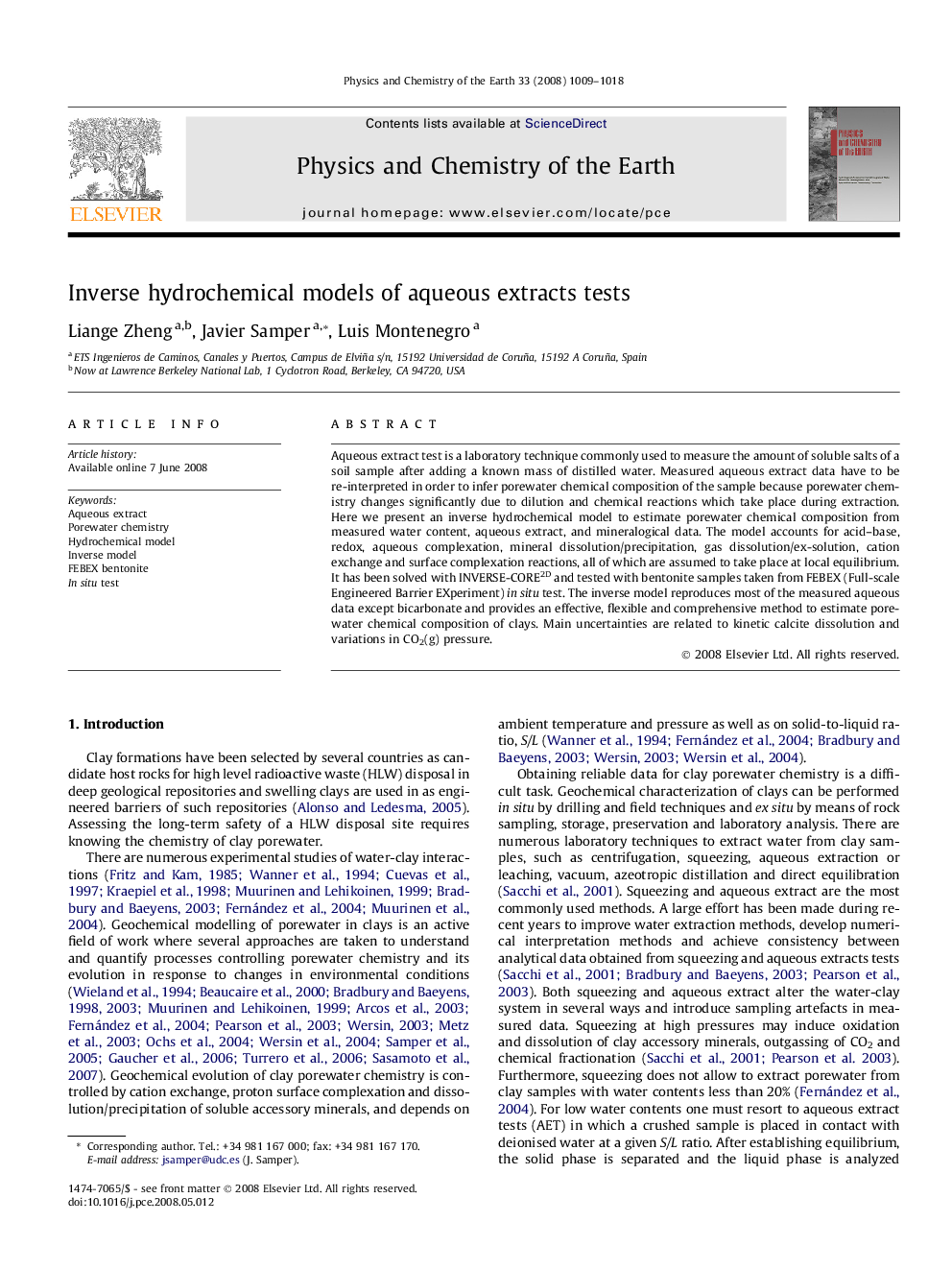| Article ID | Journal | Published Year | Pages | File Type |
|---|---|---|---|---|
| 4721703 | Physics and Chemistry of the Earth, Parts A/B/C | 2008 | 10 Pages |
Abstract
Aqueous extract test is a laboratory technique commonly used to measure the amount of soluble salts of a soil sample after adding a known mass of distilled water. Measured aqueous extract data have to be re-interpreted in order to infer porewater chemical composition of the sample because porewater chemistry changes significantly due to dilution and chemical reactions which take place during extraction. Here we present an inverse hydrochemical model to estimate porewater chemical composition from measured water content, aqueous extract, and mineralogical data. The model accounts for acid-base, redox, aqueous complexation, mineral dissolution/precipitation, gas dissolution/ex-solution, cation exchange and surface complexation reactions, all of which are assumed to take place at local equilibrium. It has been solved with INVERSE-CORE2D and tested with bentonite samples taken from FEBEX (Full-scale Engineered Barrier EXperiment) in situ test. The inverse model reproduces most of the measured aqueous data except bicarbonate and provides an effective, flexible and comprehensive method to estimate porewater chemical composition of clays. Main uncertainties are related to kinetic calcite dissolution and variations in CO2(g) pressure.
Related Topics
Physical Sciences and Engineering
Earth and Planetary Sciences
Geochemistry and Petrology
Authors
Liange Zheng, Javier Samper, Luis Montenegro,
